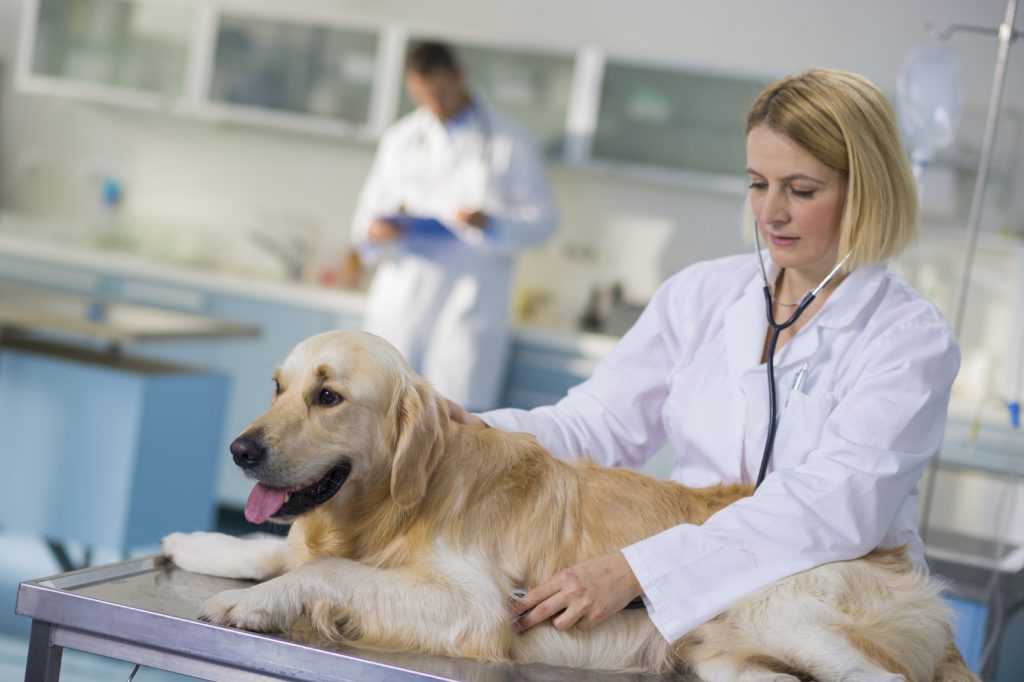
Ways to recognise Dog Obesity
The following is a system designed to help owners identify potential obesity in their pets. It was produced by Researcher, Dottie La Flamme DVM, PhD, and is a nine-point system that uses the feel and examination of a dog's ribs, waist and tuck-up (the belly area between ribcage and rear end). A dog in an ideal condition will have a thin layer of fat over the ribs. Read on to see where your dog fits in, are they under-nourished or suffering from dog obesity.
- Emaciated: Dogs with ribs, hips, and other bones that visibly protrude from a distance. Emaciated dogs show a loss of muscle as well as an absence of body fat.
- Very thin: Bones are visible but not as prominent and muscle loss is slight.
- Thin: Ribs and top of spine may be visible and the pelvic bones prominent. (Remember some breeds are naturally thin, so don't be alarmed at the bony appearance of Salukis, Afghan Hounds and other sighthounds.) Waist and tuck-up are evident.
- Underweight: Some fat on the ribs; visible waist and abdominal tuck-up.
- Ideal: Ribs are easily felt and have a thin layer of fat. Waist and tuck-up are obvious but not exaggerated.
- Overweight: Ribs have noticeable fat; waist and tuck-up are discernible but not prominent
- Heavy: Ribs are covered in a heavy layer of fat and noticeable fat deposits appear on both the spine and base of the tail. Waist is absent or barely discernible.
- Obese: A heavy fat layer completely obscures ribs and heavy fat deposits appear over the spine and around the tail base. Waist and tuck-up disappear.
- Morbid: Chest area, spine, and tail base have huge fat deposits. No waist or tuck-up. Abdomen protrudes, and fat deposits accrue on legs and neck.
Dog Obesity Products
A dog's tuck-up area is located behind the rib cage and in front of the hind legs when the dog is viewed from the side. The depth of the tuck-up depends on the breed of the dog (sighthounds tend to have a deep tuck-up), with most breeds having a moderate tuck-up, and a few have little discernible tuck-up at all.
A dog's waist is the area behind the rib cage viewed from the top. If you need further assistance in determining your dog's ideal weight and body condition check with your local vet.
Controlling Your Dog's Weight
Weight and mass can be easily gained, but unfortunately losing it is much harder. It is very important to keep an eye on your dog's weight, as it will benefit you a great deal to identify any problems at an early stage instead of leaving it until it's too late. The following guideline offers helpful tips as to how to keep a control on your dog's weight.
- Try to reduce the size of your dog's meals. It is best to measure the amount of food you give your dog at each serving, which helps keep the portion size consistent and also prevents the natural tendency to add extra food
- Treats, snacks, and table scraps are often high in fat and calorie count that heavily contribute to weight gain, so try and avoid feeding your dog these.
- Exercise is a MUST, so increase the amount your dog receives on a daily basis. This can be anything from an extra walk per day to additional playtime.
- If, when training your dog, you use treats then consider replacing these with low calorie dog treats, such as Charlee Bears and Simon & Huey treats.
- Before beginning any weight reduction programme remember to consult your vet.
- When starting a weight reduction programme for your dog keep in mind that most dogs will need to be kept on it for a period of 8 - 10 months to achieve their required goal.
Conclusion: Prevention is better than the cure
Treat your dog's health just as you would a family members' health, by taking steps to ensure your dog's health is fine at an early stage. This can make things a lot less complicated for you and your dog.
Remember to feed a high quality natural dog food diet, use portion control, limit the amount of treats and snacking and provide lots of exercise. Following these steps on a daily basis will help ensure your dog lives a healthier, leaner and more enjoyable life.
Popular Dog Food Products
























